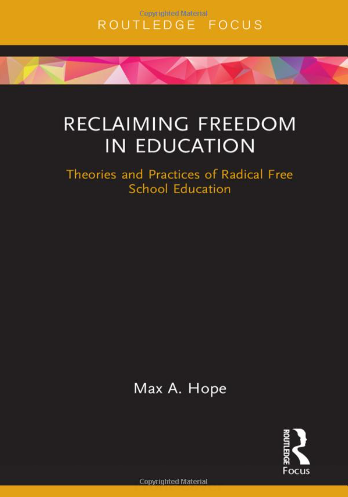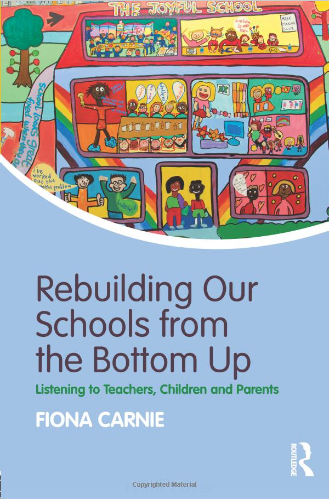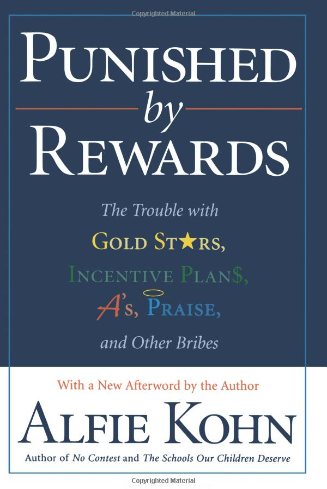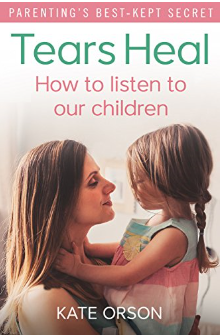15 Ways to Reimagine Education
7. Practice Democracy and Mutual Respect Between Staff and Pupils.
More and more parents and professionals are questioning the authoritarian and hierarchical foundations upon which conventional schools are built. They are becoming increasingly concerned that children and young people are not being given the respect they deserve at school.
Lack of Mutual Respect
“One may wonder how it is possible to have respect for children in an authoritarian environment. If ‘respect’ is defined as ‘to take into account the feelings, needs and rights of others’, there is no respect for children in a coercive education.”
Peter Hartkamp
The hierarchical structure of school means that teachers can command respect regardless as to whether they have earnt it, and students are not treated as equals with a valid voice.

The school environment exacerbates the inherent childism (discrimination against the young) that is ingrained in our society, whereby children are made to feel less important, less deserving of respect, unequal, and inferior to adults.
An imbalance of power creates a them-and-us culture where students feel a lack control over their lives and they are not treated as individuals or equals. This has a detrimental effect on self-esteem and learning potential.
Advocates of progressive education are favouring democratic learning environments, and adult to child relationships that are built on respect, connection and nurture. And they are calling for an end to negative behaviour management strategies like rewards and punishments.
For more information on childism, have a look at this blog post, entitled, “How Many Well Intentioned People Dehumanise Children”.
Lack of Democracy and Autonomy in Schools

The development of autonomy has been characterised as being a central goal of education because “no learner can be effective in more than a very limited area if he or she cannot make decisions for themselves about what they should be learning and how they should be learning it” (Boud, 1988. Cited in Max Hope’s book, Reclaiming Freedom in Education).
Being autonomous means being able to make decisions, personalised choices which are not overly influenced by others (Max Hope, 2019), and although autonomy is a goal of state education, many are questioning whether there is enough opportunity for this to be realised.
Author and founder of several democratic schools, Peter Hartkamp argues that if current schools are regarded as mini societies, they look more like communist dictatorships than the open and free western societies that we know for people over eighteen. He asks:
“How are children supposed to learn to participate in a democracy if they grow up in a dictatorial environment from their fourth until their eighteenth year?”
Peter Hartkamp
Similarly, the founding members of US democratic school, Sudbury Valley, in their book The Crisis in American Education state that:
“The educational system in our country today is the most un-American institution we have in our midst.”
The Sudbury Valley School
They point out that democracy is based on three ideas:
- Human beings have certain fundamental rights.
- The people affected by a decision should have a voice in making that decision.
- All people should have equal opportunities to succeed in life.
They argue that these three ideas get lip service in schools but are not practiced there. Students generally have no voice in the formation of school rules and little voice in the decisions about how they will spend their time each day. Sudbury Valley Co-Founder, Daniel Greenberg says:
“A major purpose of schooling in a democracy should be to help people prepare for the opportunities and responsibilities of democratic citizenship; and you don’t do that effectively by depriving students of those opportunities and responsibilities as they are growing up.”
Daniel Greenberg
Read more about Sudbury Valley and other democratic schools here.

Educationalist, Fiona Carnie would agree. In her book, Rebuilding our Schools from the Bottom Up, she quotes John Dewey, one of the most influential education reformers of the 20th century. In 2016 he said:

“The only form of society which facilitates the continued evolution of the human species is a democratic form of society, and furthermore, the development of such a democratic society is dependent to a large degree on the democratisation of schools and schooling.”
John Dewey
Carnie argues that 100 years later, democracy is still largely absent from the English education system. School students have little chance to contribute to decisions about what they are going to learn and how they are going to learn it; parents are not routinely involved in school decision-making; and the majority of teachers have little say in what and how they teach, nor are they able to contribute to discussions about the direction of their school.
She says that it will require a major shift to move towards an education system based on democratic principals, but the premise of her book is that – in 21st century Britain – this is the direction in which we need to be heading. Carnie says:
“If we want to strengthen democracy and if we want young people to grow up knowing that their views count, then it is important to start early and ensure that democratic processes are central not just to how schools are governed but to how education takes place on a daily basis within the classroom.”
Fiona Carnie
Benefits of Democracy and Student Voice
There is a powerful body of evidence showing the benefits of student voice and democracy. For example, The Children and Young People’s Commissioner for England has noted the importance of giving school students a voice in decision-making and commissioned a research project to identify the important elements of good practice in this area (Carnie 2018). The project summary published in 2011, asserts that:
“Schools see better learning when student voice is included. Giving students control over aspects of their learning leads to much more engagement”.
Fiona Carnie’s book also mentions a two-year longitudinal study conducted by Professor Jean Rudduck at Cambridge University for the Economic and Social Research Council. It found that when young people are involved in decisions about their learning, they become more motivated and develop a more positive attitude. This in turn helps to improve outcomes.
Another study which investigates the impact of student participation is the Hannam Report. Authored by Derry Hannam, a now retired state secondary school teacher, deputy/acting headteacher and Ofsted inspector, it found associations between participative, student-centred methods and higher academic results, attendance and less anti-social behaviour. (You can read the full Hannam Report in our Research section.)
Fiona Carnie notes that the Government has in fact acknowledged these benefits. The Department for Education published guidance for schools in 2014 on Listening to and Involving Children and Young People, which stated:
“The Government is committed to the promotion and protection of children’s rights, in line with the United Nations Convention on the Rights of the Child. It believes that children and young people should have opportunities to express their opinion in matters that affect their lives.”
The Department for Education
But Carnie argues that change is too slow coming and that schools that genuinely listen to students are too few and far between.
How Could Students Be Consulted?

States of Mind, an organisation led by young people and psychologists, is doing some revolutionary work with schools in the UK. Their Breaking the Silence project asked young people what they thought about how their schools were assessed, recognising that students are rarely asked about their knowledge and experience of education.
At the core of their work is the belief that:
- Young peoples’ views should be centred in all decisions around their education.
- They are capable of conceptualising, defining and actioning meaningful change.
The students themselves shaped the research questions, conducted their own surveys, focus groups and interviews, analysed the data and decided how it was to be disseminated.
“They wrote a letter to Amanda Spielman [Head of Ofsted] outlining their findings. In particular, they highlighted major flaws around how education is measured and how this leads to ‘memorisation’ instead of learning, negatively impacts on the mental health and wellbeing of students and the lack of real world value of much of their schooling. They aspire for more autonomy and for education to provide opportunities to: ‘discover their strengths and weaknesses… while allowing them to start distinguishing their unique values and preferences for the future’.”
A later phase saw the students designing their own alternative education evaluation framework. These young innovators have since presented their evidence-based ideas around educational transformation at the 2021 States of Mind Education Futures in Action conference, various national conferences and to the Education Select Committee.
Phase four of the project is now underway and it will be fascinating to watch it progress. The core aims are to challenge the educational status quo and present actionable alternatives that meet the needs of young people and support them to flourish. You can find out more in the film below:
Student Voice: Izzi
You can read an account – in our Voices from the Sector section – by Sudbury school student, Izzi, who talks about the “power problem in mainstream schools”. She said she had a shock moving up to secondary school, and by year 8 she began to lose patience when she realised that:
“There would never be any mutual respect between me and my teachers. My patience got so low that I felt obliged to rebel.
My brain was being shaped by an army of adults who didn’t take the time or effort to get to know me.”
Izzie, East Kent Sudbury School
For ideas and inspiration for enhancing student voice and bringing about more democratic practices at your school please visit our Schools Support section.
Negative Behaviour Management Strategies
Another way that children and young people are disrespected is through behaviour policies which promote the use of negative reinforcement strategies to control and manipulate students’ behaviour in the classroom.

Alfie Kohn, speaker and author of many books on human behaviour, education, and parenting, believes that discipline is the problem and not the solution.
Kohn recognises that working with students to build a safe, caring community takes time, patience, and skill and so it’s all too easy to fall back on discipline techniques like punishments (“consequences”) and rewards.
He admits that these threats and bribes can indeed work initially to bring about a change in behaviour, but they can never help children to develop a commitment to positive values.
Problems with Rewards and Punishments
While these strategies appear to work in the short-term to modify behaviour, what is the cost of this to the student? Parenting writer, Jaime Vargas-Benitez found that negative reinforcement has serious effects on a children’s self-esteem:
“We have to allow children to try, and fail, without negative responses. Influencing children through negativity brings about fear and withdrawal, instead of instilling a sense of self and a willingness to try, regardless of potential failure”.
Jaime Vargas-Benitez

Kate Orson, author of Tears Heal: How to listen to our children agrees. She says:
“While punishment, reward, and consequence methods appear to work quickly and effectively, this quick fix is deceptive. When we take a look at the science of what’s happening, we see a different story.
In the case of rewards, research studies show that rewarding children for behaviour destroys intrinsic motivation, and makes it less likely that the behaviour will occur in the future.
For example, in one study of classrooms it was found that many teachers used rewards to encourage children to play learning games, but when the rewards were no longer available children lost interest in the games. However, in classrooms where children could choose what they did, many happily played with the same games.”
Kate Orson
You can read more about the study mentioned in Orson’s quote here:
Intrinsic Motivation, Extrinsic Motivation and the Process of Learning, by Professor Mark Lepper
7 Reasons Why Classroom Behaviour Charts are Damaging
Similarly, Wendy Thomas Russell, award-winning journalist and parenting columnist, writes about the problem with behaviour charts. She says that while the rationale for these charts is understandable, and while they make work in the short-term, countless child psychologists and the most respected parenting experts have proved that the function of rewards in child-rearing is drastically misguided.
Rewards are as detrimental as punishments when used regularly. Thomas Russell gives seven reasons why:
- They’re demeaning.
- They’re shaming.
- They make teachers a figure of judgment, not empathy.
- They encourage extrinsic motivation and corrode self-esteem.
- They’re hypocritical.
- They waste valuable class time.
- They don’t work.
You can read her full article at PBS News Hour.
Are Children’s Rights Being Realised?
In addition to the detrimental impact on a student’s self-esteem, mental health and wellbeing, many believe that the negative behaviour management strategies used in schools are actually in breach of children’s human rights.

For example, not everyone is aware that some primary and secondary schools use unethical deep isolation booths, in an attempt to manage behaviour.
On our Campaigns page you can read about Ban The Booths, which is a campaign – with growing MP and celebrity support – working to raise awareness and lobby the Government to have them banned.
Shouting and Aggression Undermine Education
While it may sound dramatic to say that the school environment is aggressive, it is not uncommon for some teachers to be heard shouting at their students. This causes fear and is not conductive to learning. Dr Andrew Curran, paediatric neurologist at Alder Hay Children’s Hospital states that:
“Teachers that repeatedly shout at kids are clearly failing. They are showing a complete misunderstanding of the human brain. The fact is that the more fear children experience, the less likely they are to retain what they are being taught.”
Dr Andrew Curran
Dr Currran says that twenty-five years of neurobiological research tells us that children learn best when they feel loved:
“You can’t argue with the scientific evidence when it comes to knowing what the brain needs for learning.
The brain needs dopamine to learn. 93% of its secretion is regulated by our emotional brain, which means if your heart’s not engaged, your head won’t work properly.”
Dr Andrew Curran
Aggression Causes a Culture of Bullying
Pupils simply cannot learn in a hostile environment, and according to academic, Luke Roberts, when staff blur the line between enforcing discipline and exerting power to assert their dominance, it can actually have the unintended knock-on effect of role-modelling bad behaviours to their pupils.
Luke is studying a PhD at Cambridge University, exploring how power and relationships converge, and he wonders what teachers hope to achieve by taking an aggressive approach. He says it is easy to dismiss aggressive practice as the product of a “no nonsense” personality, or a teacher having a bad day, but argues that an unintended consequence of aggressive teaching is that it creates pupils who bully.
He defines bullying as:
“The repetitive, intentional, aggressive behaviour of perpetrator(s) that creates a relationship of power between them and the individuals or groups who are their targets”.
When staff adopt aggressive practices for dealing with pupils, they give permission for this to become acceptable within the school culture. This, says Luke, can cause the “bystander effect” (described by Darley and Latané, 1970), which means that individuals observing the distressing situations become bystanders.
According to Luke, research suggests that, in school, staff are more likely to walk past those situations in which the pupil is on the receiving end of a teacher’s aggression. The passivity displayed by colleagues towards an aggressive staff member may arise from an anxiety of being seen to undermine that person, which allows their aggressive actions to go unchallenged. But this has the effect of giving the message to pupils that no one will support you, thus giving tacit consent that aggression is the way to get what you want in school.
This leads to a worrying situation in which pupils use aggressive behaviour with their peers because a) it has been role-modelled to them by staff, b) it has been shown to be the way to establish themselves in the hierarchy of the school, and c) it is a way to protect themselves from being perceived as weak.
Punishments for Talking
Conventional schools are still working within a ‘be seen and not heard’ culture, where the teacher delivers information to students, and the students sit in silence and do as they are told. Punishments are routinely given to those who speak out.
Silencing children and young people however is counter-productive, as wider society is looking for innovators and creative thinkers, individuals who question, have a voice, and think outside the box.
The workplace is also calling for People Skills but students at school are given too few opportunities for putting these skills into practice.
Importance of Human Connection and Positive Relationships
Experts in education and child care have found that the optimum environment for learning is one which nurtures a children’s confidence and self-esteem and gives them a sense of security. Therefore, a school culture must be built upon positive, trusting relationships where the students are seen as individuals and equals, with unique interests, strengths and weaknesses.

Patty Wipfler, founder of the Hand-in-Hand Parenting by Connection support organisation studied the limbic system in the brain which is involved in human emotions and motivations, particularly those related to survival such as fear and anger. Her research and over 30 years working with children has found that students need connection and empathy in order to thrive.

She explains that when a child feels connected to another human being, their brain forms the neural pathways that allow them to learn, remember, and think.
When a child senses that we’re on their side, that we are listening to them and understanding their perspective, they can learn, cooperate, and connect with others in a positive way.
Educational philosopher, Nel Noddings agrees that positive relationships are key to educational success. She says:
“Education has a moral purpose and that children learn best from those with whom they have a caring, trusting relationship.”
Nel Noddings
Support for Schools
Have a look at our Schools Support page for ideas and inspiration for enhancing student voice and bringing about more democratic practices at your school.
Campaigning for Change
Visit our Campaigns page to find out more about Ban the Booths, as well as other campaigns which aim to bring about positive changes within the state education system.
Further Reading on Why Progressive Alternatives are Needed
Please visit 15 Ways to Reimagine Education

